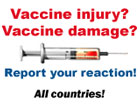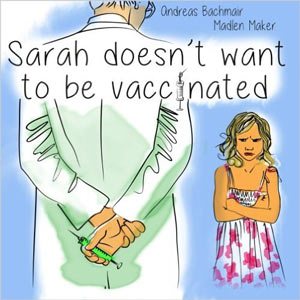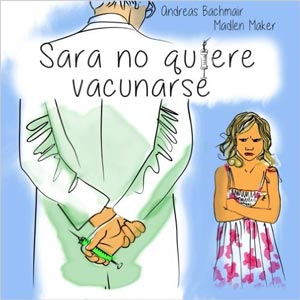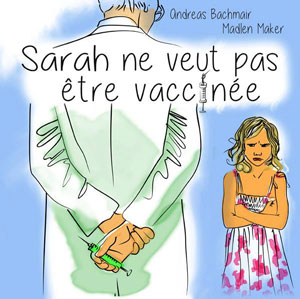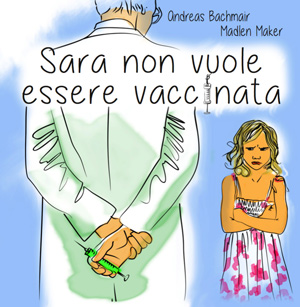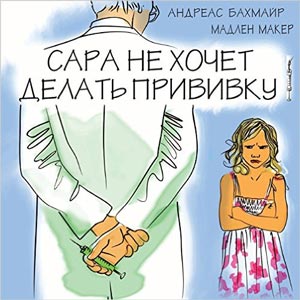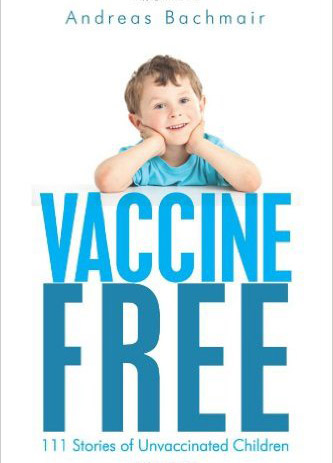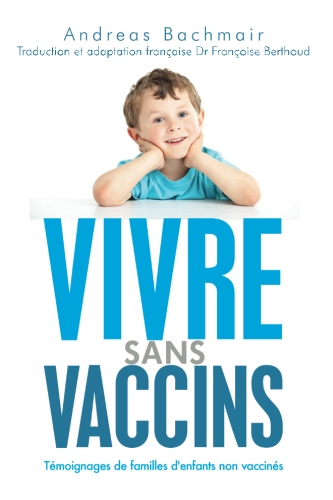Mumps vaccination
Vaccine
Mumps viruses for vaccines are bred in chicken fibroblast cell cultures. The viruses are weakened for the vaccination and antibiotics are added. Traces of egg white cause the vaccination to be an allergic risk. It cannot be excluded that the Creutzfeld Jacob disease can also be transmitted by human albumin.
The vaccine is administered as an MMR vaccination, i.e. additionally against mumps and rubella. The vaccination itself consists of weakened live viruses which are administered simultaneously. This is problematic due to the fact that one of the vaccine viruses can cause immune suppression which leads to gradual infection with other pathogens (Halsey,-N-A: Increased mortality after high Titer measles vaccines: too much of a good thing.Pediatr-Infect-Dis-J. 1993 Jun; 12(6): 462-5)
Immunity
Since the vaccine was introduced the number of cases of mumps has gone down rapidly. But while fewer children are affected there is a relative increase in the number of small children and adults experiencing the disease. (www.CDC.gov) During a mumps epidemic in Switzerland, about the same number of people who had not been vaccinated in a Swiss village fell ill as people who had been vaccinated. All of those who had been vaccinated twice fell ill which leads one to the conclusion that vaccinations result in people becoming weaker rather than gaining more protection. In a different study in Switzerland the effectiveness of the vaccination was only 47-77% that apparently the fault of a “weak” virus strain (“Rubini”).(Zimmermann H, Matter HC, Kiener T:Mumps epidemiology in Switzerland: results from the Sentinella surveillance system 1986-1993. Sentinella Work Group]Soz Praventivmed. 1995;40(2):80-92. )
In January 2000, the BAG (Federal Office of Health, Switzerland) reported a new mumps epidemic. In approx. 70% of the cases documented in a questionnaire the children in question had been vaccinated (85%) as well as 15% of the adults (had been vaccinated). Even when 70-80% of the people have been vaccinated this is an extremely high failure rate.(Impfen, Routine oder Individualisation, Arbeitsgruppe für differenzierte Impfungen2 Aufl. März 2000, S. 39)
Since then the recommendation in Switzerland is for all people who had been vaccinated with the rubini strain to be vaccinated again with a more effective strain
In 2003 the situation was as follows: Of the cases of mumps whose vaccination status was known (90%), 75% had been vaccinated: 40% with one dose, 47% with two doses and 13% with an unknown number of doses. In 2004: Of the cases whose vaccination status was known (82%) 63% had been vaccinated: 12% with one dose, 77% with two doses and 12% with an unknown number of doses. A majority of the people who had been vaccinated came down with the disease despite the fact that they had been vaccinated. (http://www.BAG.admin.ch/infekt/publ/bulletin/d/mumps_bu4404.pdf)
In its August 2008 edition, Arzneitelegramm reported that susceptibility rises exponentially the further away the last exposition to the mumps virus is in the past. ( KAAIJK, P. et al.: Euro Surveill. 2008; 13 (26); http://www.eurosurveillance.org/ViewArticle.aspx?ArticleId=18914)
During an epidemic in Sweden where vaccination rates have been more than 90% for 20 years patients were 43 years old on average. 25 of the 31 patients who were interviewed were at least 24 years old. 20 persons, all between 34 and 88 years of age and not vaccinated, stated that they had already come down with mumps in the past once before. ( SARTORIUS, B. et al.: Euro. Surveill. 2005; 10 (9) http://www.eurosurveillance.org/ViewArticle.aspx?ArticleId=559).
Side effects, vaccination complications and vaccination damages of mumps vaccination
Aside from local reactions at the site of injections there can be fever, symptoms which resemble the measles, middle ear infections. Autoimmune diseases, swellings of the testicles and diabetes mellitus have also been observed. Because the vaccination is generally administered in combination with measles and rubella vaccine it cannot be said with certainty which of the vaccines is problematic.
In 1994 Arzneitelegramm reported that mumps vaccines were the most frequent triggers of parotitis. They occur in 5 of 100 people who have been vaccinated. (Arneitelegramm AT: 1994, 11: 109)
In a trial conducted by Otten, Helmke, Stief et al. the connection between diabetes and mumps vaccination was investigated. The researchers came to the conclusion that mumps vaccinations cannot protect from diabetes mellitus. Quite the contrary, it can possibly trigger it, if there is a disposition towards it (Otten A, Helmke K, Stief T, Mueller-Eckhard G, Willems WR, Federlin K. : Mumps, mumps vaccination, islet cell antibodies and the first manifestation of Diabetes mellitus type I.Behring Inst Mitt. 1984 Jul;(75):83-8.)
When the old mumps virus strain “Urabe” was used, meningitis occurred frequently (Fujinaga T, Motegi Y, Tamura H, Kuroume T. : A prefecture-wide survey of mumps Meningitis associated with measles, mumps and rubella vaccine.Pediatr Infect Dis J. 1991 Mar;10(3):204-9.), which why it was taken from the market. The “Jeryll-Lynn” strain used today is tolerated much better.
you can find side effects of the Mumps vaccine in our vaccine adverse side effects database


